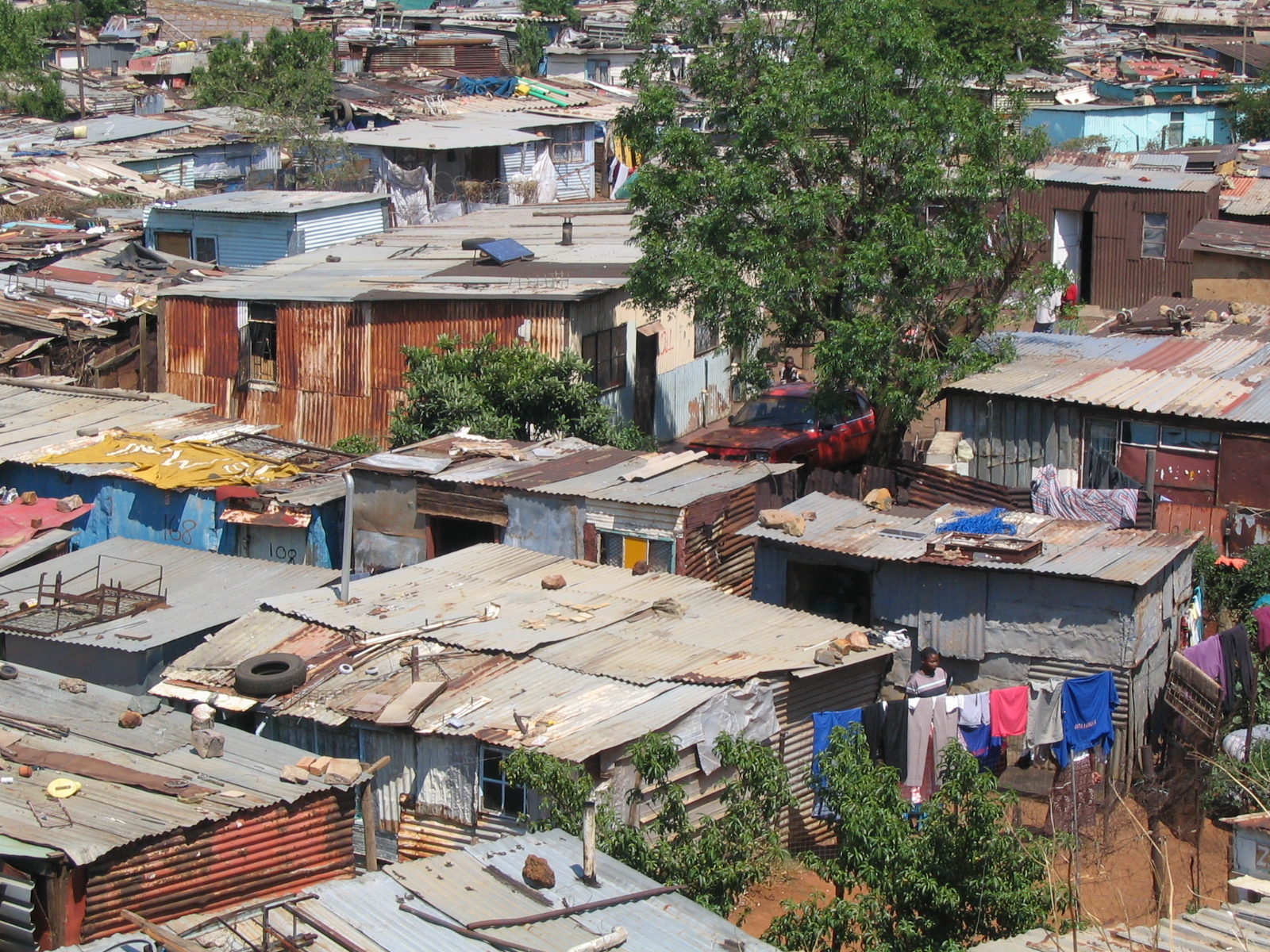Here we are in Soweto. We just drove past Archbishop Desmond Tutu’s house, the gentle Anglican cleric who preached against apartheid. I would have missed the undistinguished house entirely had not Eric, our local Soweto guide, pointed it out.
It looked like virtually every other place on the crowded block, with its grilled windows, boxy shape, and brick walls. Tutu doesn’t stay here much, but not because he moved uptown to fancier digs. The crowds flocking to see the famous cleric’s home apparently got to be too much. The presence of the Mandela Family Museum, which is just down the block, obviously didn’t help. (Alas, the former president’s two-room home was being renovated so it was closed to bloggers and tourists alike.) Both Tutu and Mandela, of course, whose kind face can be seen throughout the township on monuments and billboards, won the Noble Peace Prize. No wonder it’s such a popular street!

Photo credit: Wikipedia
It’s day six, or at least I think it is, of our American bloggers tour in South Africa. Although I enjoyed seeing South Africa’s snazzy new electric car, prowling around the De Beers diamond mining ship “Peace of Africa” (no need to comment there), pursuing lion in the bush, Soweto stole my heart. Maybe it’s because I vividly remember the 1980s when students shamed the University of California into ridding its investments in the regime? Or maybe it’s just my tendency to gravitate toward the difficult?
And what could be more difficult than a township where children were shot and tear-gassed by South African police when they peacefully marched against the use of Afrikaans in their schools? And where we stayed at the new Holiday Inn in Freedom Square, where there was a Winnie Mandela boardroom and photos of political icons above the comfy beds? The hotel seemed like progress to me, but then how do you measure progress in a country where many people lack jobs, basic services and live in shacks?
But history is another thing. And it’s easy to forget that a mere 15 years ago, democracy did not exist. To their credit South Africans seemed more than ready to confront their dreadful past. In Soweto we visited the Hector Pieterson Museum, a sober memorial to the 13-year-old boy who was killed by police during the student demonstrations on June 16, 1976. Near the site of Hector’s murder is a large black and white photo of him. Or, rather, of an 18-year-old boy carrying Hector while his teenage sister runs beside them sobbing. The photo was taken by a black journalist who hid the film in his shoe. Soon it was published around the world, becoming a symbol of the country’s racial horrors. (Though the teenage boy in the photo, like many young black students, disappeared.) Now, normally, I don’t make a point of crying in public, but this time I felt I could make an exception.
I wasn’t the only emotional one. Inside the museum Nadine, a white South African in her 30s who accompanied us on our trip, grew teary looking at news footage of her country’s white leaders. She also got angry. How could her ancestors have done this? Meanwhile, she and her black female colleagues, Hlengiwe, Kapano, and Zuza, were like the Johannesburg version of “Sex and the City.” Constantly laughing, fooling around, and hugging each other. The only things missing were the Manahlo Blaniks and the cosmopolitans.
The South Africans traveling with us were wonderful, and I was grateful to have their insights. Graeme, a white South African journalist who organized our tour, witnessed the student revolution in 1976. He had gone to Soweto on another story when the police suddenly opened fire and the kids fled screaming. The scene was chaos. When he ran to find a phone to call his editor, he was finally directed to the one residence with a phone: Desmond Tutu’s.
Then there was Margaret, another of our other lovely minders. Margaret wore the most beautiful head scarves with her braids dangling out the back. She always looked glamorous. At one point I told her I wanted her to teach me how to wrap my head like hers, but then I forgot about it. Margaret grew up in Soweto and was jailed in the 1970s as a student activist. (Don’t tell her I said this, but she’s really mellowed since then.) We were strolling through an historic park, where there’s a colorful mosaic of the freedom struggle, when she pointed out a modest Anglican church to me. This was where political leaders came when they wanted to meet with the community in secret, she said, so they could evade the police.
Margaret lives in Johannesburg now because she loves the big city. But when she wants to feel the love of her people, she told me, “I come here to Soweto.”

Mona Gable is a political blogger for The Huffington Post where her posts on the 2008 presidential election and on Hillary Clinton’s candidacy have been linked to by numerous websites, from ABC News.com to The Drudge Report.
In addition to blogging, Mona is an award-winning journalist and essayist whose work has appeared in the Los Angeles Times, Salon, Ladies’ Home Journal, Family Circle, Health, LA magazine, Wall Street Journal, Child, and the San Francisco Chronicle.
She is a contributor to the new Seal Press anthology “The Maternal Is Political: Women Writers at the Intersection of Motherhood and Social Change.” Her essays have also been published in two bestselling anthologies, “Mothers Who Think: Tales of Real-Life Parenthood,” which won the American Book Award and the bestselling anthology “A Cup of Comfort for Mothers and Daughters.” She is currently working on a memoir, a portion of which will be published in West this spring. Since 2004, she has taught creative nonfiction and personal essay in the Writers Program at UCLA Extension.








